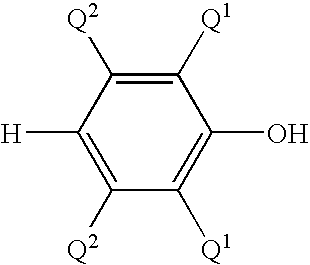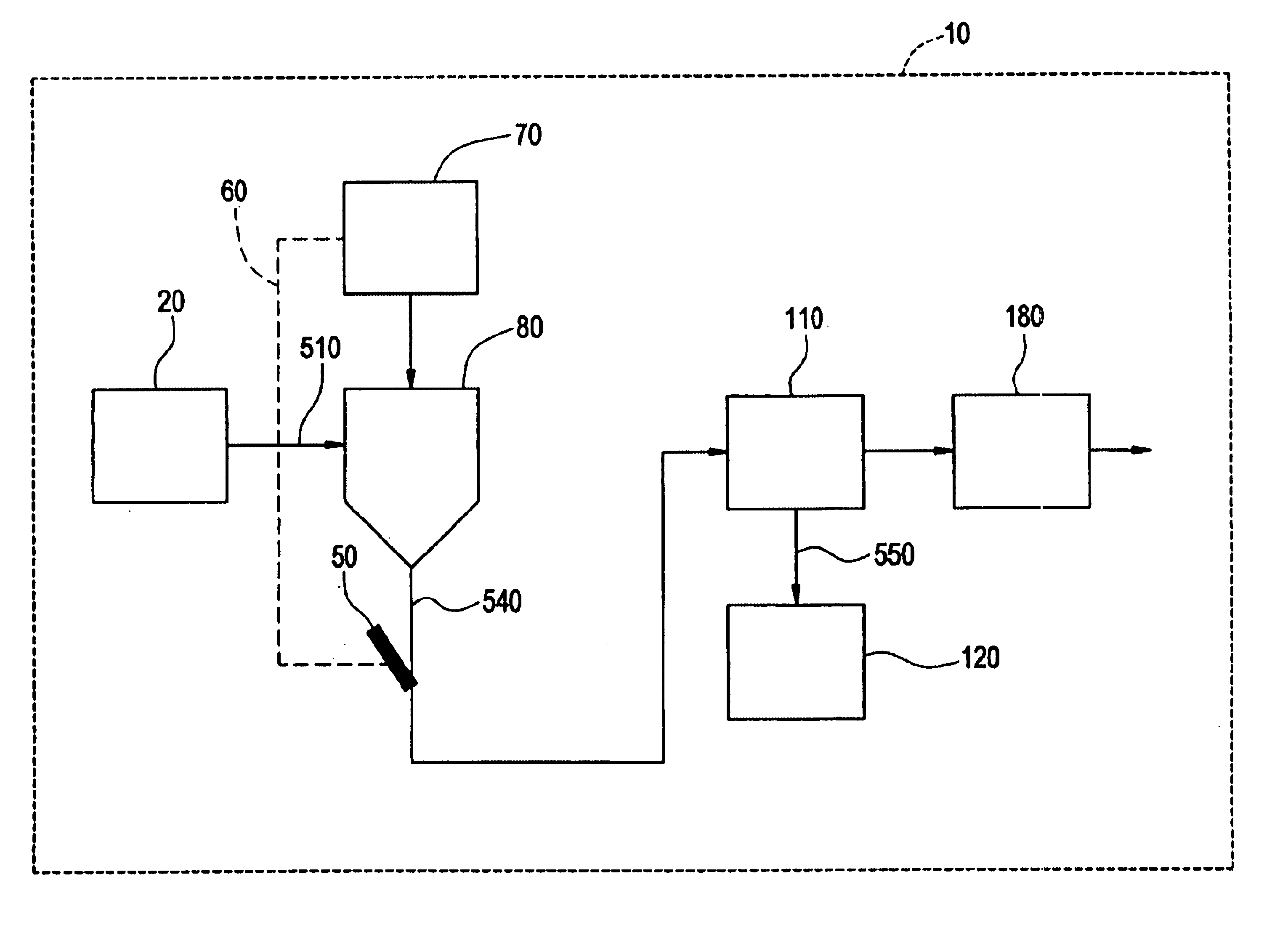Method and apparatus for preparing a poly(arylene ether)
a technology of arylene ether and polyethylene ether, which is applied in the field of methods and apparatus for preparing poly(arylene ether), can solve the problems of substantial quantities of unacceptable poly(arylene ether), poly(arylene ether) particles may be formed, and the control of precipitation may be difficult, so as to reduce the coagulation tendency of the poly, increase the solubility of the poly, and reduce the coagulation tendency
- Summary
- Abstract
- Description
- Claims
- Application Information
AI Technical Summary
Benefits of technology
Problems solved by technology
Method used
Image
Examples
examples 10 to 17
A process similar to that described in Examples 1-9 was used to produce a poly (2,6-dimethyl-1,4-phenylene ether) having an intrinsic viscosity of 0.40 dL / g. Variations in production rate, and water and methanol composition of the antisolvent were used to produce eight samples varying from about 65 to about 105 micrometers in their mean particle size measured 15 seconds after dispersion formation. The corresponding final products (i.e., the poly(arylene ether) powders obtained after filtration and drying) were analyzed to determine their bulk density and fines content, and the relationships between these final product properties and particle size were explored through linear regression. The results are presented in Table 2 and FIGS. 3 and 4. The results for bulk density, depicted in FIG. 3, show that there is a strong correlation between increasing particle size and increasing bulk density. The results for fines content (i.e., the weight percent of particles less than 28 micrometers...
examples 18 to 22
The process of Examples 1-9 was conducted and particle size distributions were determined at three positions in the process. The first position was about 15 seconds downstream of the mixing pump 40. The second position was in the outlet of the third precipitation tank 100. The third position was at the outlet of second reslurry tank 160. The results, presented in Table 3 and plotted in FIG. 5, illustrate the changes in particle size that take place over time as the poly(arylene ether) solid is formed in the initial dispersion (i.e., just after mixing pump 40), in the third precipitation tank 100, and in the second reslurry tank 160. These experiments show, surprisingly, that larger the particle sizes observed after mixing pump 40 yield smaller particle sizes in the second reslurry tank 160.
[t3]
example 23
This example illustrates one way to control particle size automatically. Using an apparatus similar to that depicted in FIG. 2, poly(2,6-dimethyl-1,4-phenylene ether) particle size was automatically maintained between about 110 and 125 micrometers by adjusting the flow from methanol supplemental antisolvent tank 230 and mixing pump 40 in response to particle size measurement at the outlet of mixing pump 40. When the water content in the recycled methanol stream (recovered antisolvent 600) increased due to normal function of the apparatus, the additional methanol flow was increased by up to 3-fold to maintain the desired particle size. Data are presented in Table 4 and FIG. 6. No lump formation or blockages occurred.
[t4]
PUM
| Property | Measurement | Unit |
|---|---|---|
| weight percent | aaaaa | aaaaa |
| weight percent | aaaaa | aaaaa |
| weight percent | aaaaa | aaaaa |
Abstract
Description
Claims
Application Information
 Login to View More
Login to View More - R&D
- Intellectual Property
- Life Sciences
- Materials
- Tech Scout
- Unparalleled Data Quality
- Higher Quality Content
- 60% Fewer Hallucinations
Browse by: Latest US Patents, China's latest patents, Technical Efficacy Thesaurus, Application Domain, Technology Topic, Popular Technical Reports.
© 2025 PatSnap. All rights reserved.Legal|Privacy policy|Modern Slavery Act Transparency Statement|Sitemap|About US| Contact US: help@patsnap.com



